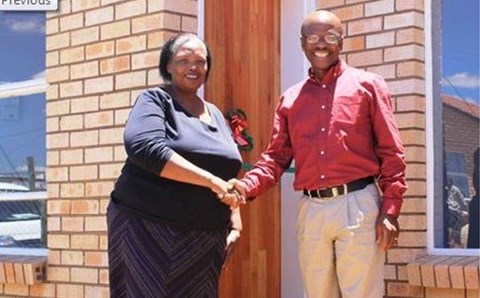
The two women were among 76 indigent families to receive the keys to their new homes at an official handover ceremony in November in the first phase of the Lindelani Youth Build Project, an initiative launched by deputy president Cyril Ramaphosa on Youth Day, 16 June last year.
Corobrik is supplying face bricks for 500 homes for the project, each 42m² in size, which will see the 14 year old informal settlement transformed into a suburb. So far 250 face brick homes with disability-friendly toilets have been built, with the remainder due for completion later this year.
"Clay bricks have proved their value over the years," said Musa Shangase, Corobrik's commercial director. "Their durability, pleasing natural colour, and low maintenance properties are complemented by their thermal efficiency which contributes to improved indoor comfort in all temperatures and lower energy costs throughout the life of the building."
"It is also an uplifting lifestyle statement for the residents of Lindelani. Clay brick is universally acknowledged as an aspirational product which evokes unconscious feelings of comfort, satisfaction and well-being for home owners. They know there is no finer way to build, so clay brick construction is an enlightened choice for addressing past inequalities and providing dignity and status to house owners and the community in general," Shangase said.
"The robustness and natural thermal performance properties of fired clay bricks, together with the noise and fire resistance qualities of clay brick walls also provide safety and security for the occupants and their possessions," he said.
"The high thermal mass inherent in double skin clay brick cavity walls helps keep the inside of the homes cool in summer and warm in winter, and important factor in the Northern Cape with its widely fluctuating temperatures," Shangase said.
"A double skinned face brick home successfully meets the three sustainable development requirements - namely economic, social and environmental. In economic terms, it provides a competitive built cost with low life cycle costs, proven durability and longevity. Face brick also holds its value and provides a secure long-term investment," Shangase said.
"From a social viewpoint, aside from providing robustness and safety, face brick is synonymous with dignified living, meeting people's aspirations to live in proper houses. Its intrinsic environmental advantages include its capacity for reuse, its healthy living attributes, its promise of low future carbon debt and superior thermal performance, lowering the operational energy usage of buildings," he concluded.